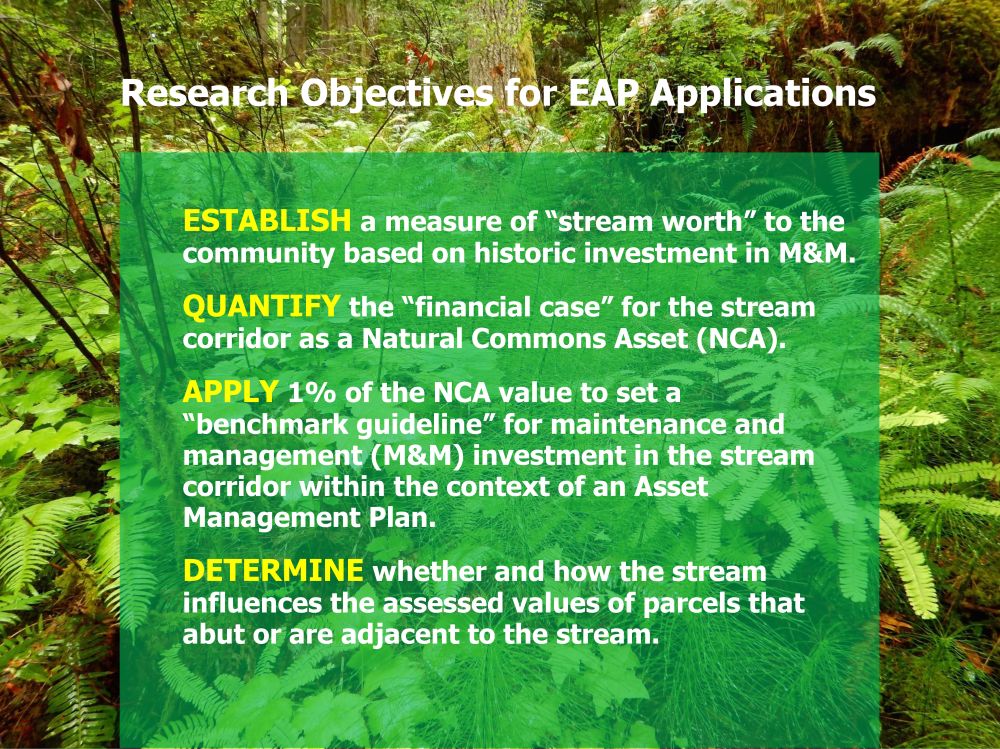STORY BEHIND THE STORY OF EAP, THE ECOLOGICAL ACCOUNTING PROCESS: “We validated the usefulness of EAP through application of a consistent set of research questions and objectives to seven subsequent case studies,” stated Tim Pringle, EAP Chair
Note to Reader:
Master drainage planning, integrated stormwater planning, and other processes at best pay lip-service to the role of the streamside protection zone within a stream system context, the condition of native vegetation and woodlands cover, and the need for restoration. Now, the Ecological Accounting Process (EAP) provides the reason to ask the question, why aren’t these factors considered and given equal weight to engineering considerations?

EAP Building Blocks & Outcomes
“What gets measured gets managed (or could be). The challenge for local governments is how to determine financial values for ecological services and the natural systems that deliver them. The community expectation that these assets will be maintained and managed is the impetus for changes in accounting systems used by local governments,” stated Tim Pringle, EAP Chair.
“How do we get useful and replicable numbers for financial valuation of ecological services? And then it struck me, the BC Assessment database is the lynchpin for financial valuation. A stream corridor has a financial value which we determine through an analysis of parcel data using BC Assessment for sample groups of parcels abutting and adjacent to streams.”
“After testing our approach, we validated the usefulness of EAP through application of a consistent set of research questions and objectives to seven case studies. From start to finish, it was a building blocks process. Understanding what each local government partner needed as an outcome from their EAP project became a critical consideration. The sequencing of projects was fortuitous, resulting in insights which improved the research process.”

Target-based Strategies for Riparian Restoration
“Now, with EAP as a foundation piece, these local governments have a rationale and a metric to do business differently via multiple planning pathways to achieve the goal of ‘natural asset management’,” added Kim Stephens, Partnership Executive Director.
“The Riparian Deficit, a measurable metric, would allow them to change their internal asset management conversations and begin the process of engendering community support for a target-based strategy for systematic M&M investment over decades, as opportunities arise, to restore riparian woodlands and native vegetation for the full 30m width of the regulated streamside protection setback zone.”
To Learn More:
The table below describes the outcomes for the five projects comprising Stage 3 in the 3-stage building blocks process over a 6-year period of applied research. Click on the image to download a PDF copy.
Also, download a copy of Ecological Accounting Process, A B.C. Strategy for Community Investment in Stream Systems (2022) – the Synthesis Report is a distillation of over 1000 pages of case study documentation into a storyline that is conversational and written for a continuum of audiences that includes land use practitioners, asset managers, stream stewards, and local government decision-makers.


